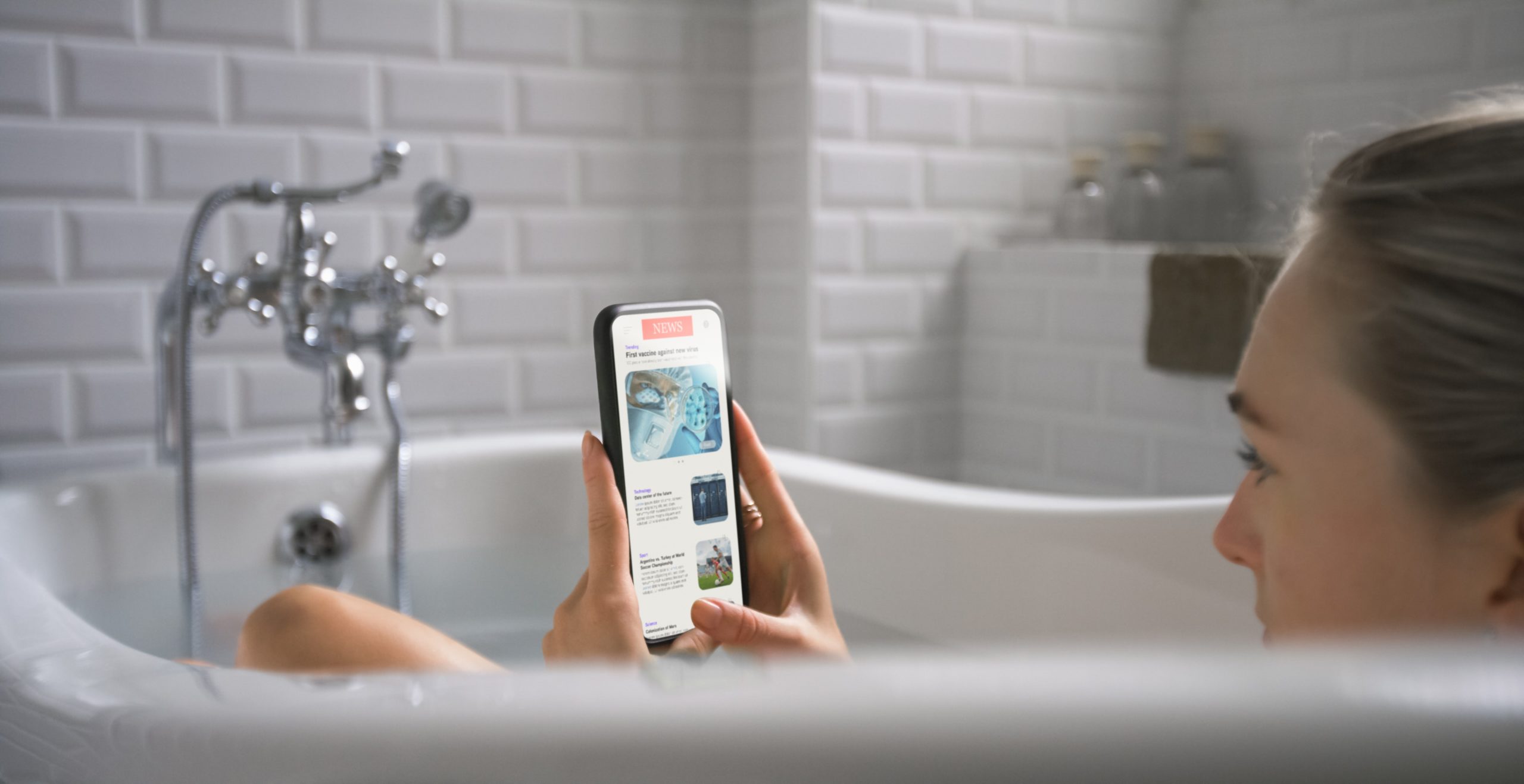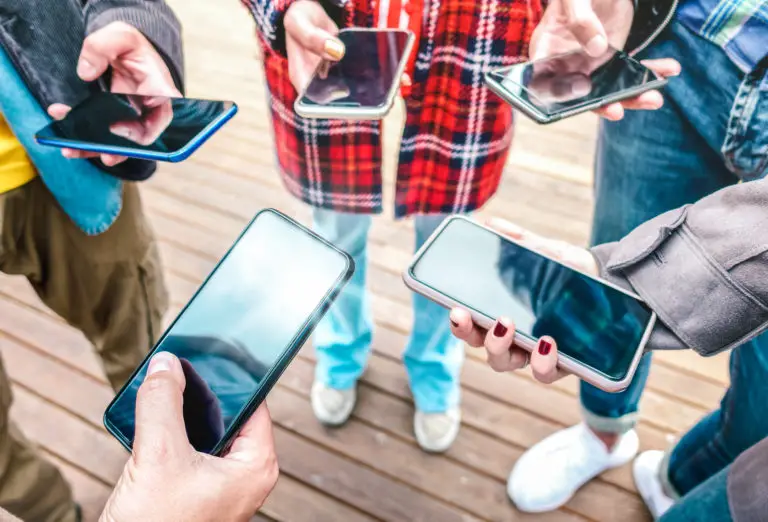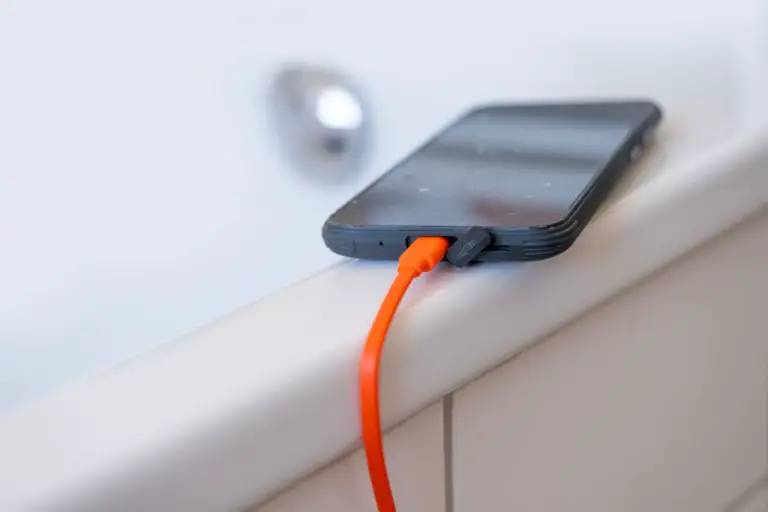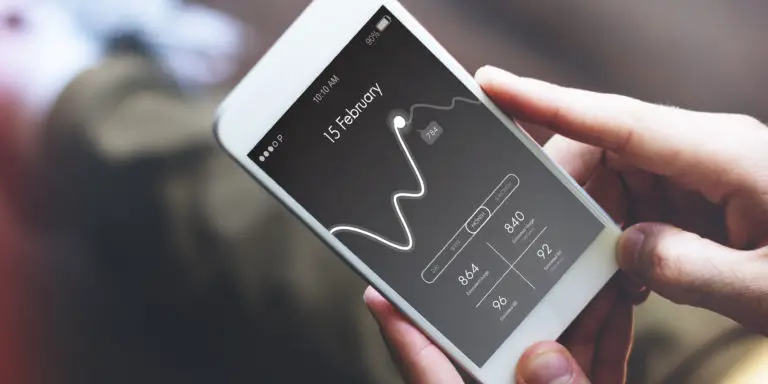Phone-related accidents can have devastating consequences, especially when it comes to teenagers. The young girl in Avellino, Italy, Maria Antoinetta Cutillo, was only 16 years old when she lost her life in a tragic accident involving her phone and water. Incidents like these serve as a stark reminder to parents and guardians about the potential dangers faced by teenagers and the importance of educating them on phone safety.
Teenagers are often more dependent on their phones than any other age group. They use their devices for communication, entertainment, schoolwork, and much more. However, this heavy reliance on phones also puts them at a higher risk of phone-related accidents.

Moreover, teenagers tend to have a greater sense of invincibility and may underestimate the potential dangers associated with using electronic devices near water. It is crucial for parents and educators to have open and honest conversations with teenagers about these risks, emphasizing the importance of following safety guidelines.
Teenager Phone Usage Statistics
According to a Pew Research Center study from 2018, 95% of teenagers in the United States have access to a smartphone, and 45% claim to be online on a near-constant basis. This widespread smartphone usage among teenagers reinforces the need for increased awareness and education about phone safety.
Furthermore, a study conducted by Common Sense Media found that 50% of teenagers feel addicted to their smartphones, and 72% of teenagers feel the need to respond immediately to their phone notifications. These statistics highlight the strong attachment that teenagers have to their phones and the potential risks associated with their excessive usage.
The Tragic Accident: Detailing the Incident
According to local media reports, the incident unfolded when Cutillo was alone at home. The family members were not present when the tragedy occurred, and it was her friend who raised the alarm after their phone call abruptly ended. Concerned for Cutillo’s safety, the friend contacted emergency services.
Upon arriving at the scene, emergency responders rushed the teenager to the hospital. However, their attempts to revive her proved futile. The young girl’s body was then taken to the morgue at the Moscati hospital for further investigation.
A Heartbreaking Tribute by a Friend
In a touching tribute on TikTok, the friend who was on the call with Cutillo expressed their anguish and sorrow. They recounted the last moments they shared, emphasizing the pain and sadness they feel after losing someone so dear to them. The friend described the emptiness left behind and the lasting impact Cutillo had on their life.
“I miss you, my heart,” the friend expressed. “I have your image fixed in front of my eyes.”
This heart-wrenching tribute not only highlights the bond between the two friends but also serves as a reminder of the profound impact a tragedy like this can have on the lives of those left behind.
An Unfortunate Reality: Phone-Related Accidents
While incidents like these are rare, they draw attention to the need for caution when using electronic devices near water. Even though modern phones are equipped with safety features, accidents can still happen, leading to severe consequences.
A similar case took place in Thailand, where a 27-year-old man named Wanchai Deengam lost his life due to electrocution caused by his phone. Deengam fell asleep with his phone charging, and it is believed that a short circuit occurred, leading to the tragic outcome.
It is crucial to understand the potential risks associated with these incidents to prevent similar tragedies from occurring. By raising awareness and taking necessary precautions, we can mitigate the dangers posed by electronic devices.
Setting Healthy Phone Usage Guidelines for Teenagers
To promote safe phone usage among teenagers, it is crucial to establish clear guidelines and boundaries. Here are some tips to help parents navigate the world of smartphone usage with their teenagers:
1. Discuss the importance of phone safety: Have open and honest conversations about the potential dangers associated with phones, especially in relation to water and charging habits.
2. Set limits on phone usage: Establish time restrictions for when and how long teenagers can use their phones each day. Encourage them to take breaks and engage in other activities.
3. Create phone-free zones: Designate specific areas or times where phone usage is not allowed, such as during mealtimes or in bedrooms.
4. Encourage face-to-face interaction: Promote spending quality time with family and friends without the interference of smartphones.
5. Teach responsible charging habits: Emphasize the importance of using safe and certified charging accessories and avoiding using devices while they are charging.
By implementing these guidelines, parents can help teenagers develop healthy phone habits and reduce the risk of phone-related accidents.
Recognizing the Signs of Phone Addiction
It is essential for parents and guardians to be aware of the signs of phone addiction in teenagers. Some common signs include:
1. Preoccupation with the phone: Constantly checking notifications and being unable to put the phone down.
2. Irritability or anxiety when separated from the phone.
3. Decline in academic performance.
4. Neglecting other activities and relationships.
5. Disturbed sleep patterns due to excessive phone usage.
6. Decreased social interaction in real-life settings.
If parents notice any of these signs, it may be time to intervene and set limits on phone usage to ensure the safety and well-being of their teenagers.
Related Cases: Highlighting the Risks
Unfortunately, these cases are not isolated incidents. Several instances of phone-related accidents resulting in fatalities have been reported around the world. It is essential to recognize these cases to understand the potential risks and take appropriate precautions.
For instance, a teenager in the United States experienced a tragic accident when her phone fell into the bathtub while she was bathing. The incident occurred due to the use of a faulty charging cable, resulting in her unfortunate demise. This highlights the significance of using reliable and safe charging accessories.
In another case, an individual lost their life when their phone exploded due to a faulty battery. The explosion caused severe injuries and ultimately proved fatal. This case emphasizes the importance of regularly checking electronic devices for any signs of malfunction or damage.
First Aid Tips for Electric Accidents
In times of crisis, knowing how to respond swiftly and effectively can make all the difference. Electric accidents, especially those involving water and electronic devices, demand immediate action to ensure the victim’s safety. Here are some crucial first aid tips that could potentially save lives:
1. Assess the Scene
When you encounter an electric accident, the first step is to ensure your own safety. Make sure the source of electricity is no longer a threat. If the accident involves a plugged-in device or exposed wires, turn off the power source if it’s safe to do so, or remove the victim from the source of electricity.
2. Call for Help
Immediately dial your local emergency number for professional medical assistance. While waiting for paramedics to arrive, provide them with all necessary details about the incident, including the fact that it involves electricity and water.
3. Do Not Touch the Victim
Avoid direct contact with the victim if they are still in contact with the electric source. Even if the victim appears unconscious, it’s crucial not to touch them until you are certain the electricity is completely off and it is safe to approach.
4. Perform CPR if Necessary
If the victim is unresponsive and not breathing, begin cardiopulmonary resuscitation (CPR) if you are trained to do so. Ensure the victim is lying on a dry surface away from the source of electricity. CPR can be a lifesaving measure when administered correctly.
5. Avoid Moisture
Keep the surroundings dry. Water conducts electricity, so it’s vital to prevent any additional exposure to moisture. Move wet objects away from the victim and ensure that you and anyone assisting are standing on dry ground.
6. Use Non-Conductive Materials
If you need to separate the victim from the source of electricity, use non-conductive materials such as dry wooden broom handles, rubber gloves, or a plastic chair. Never use metal objects, as they can conduct electricity.
7. Monitor Vital Signs
While waiting for professional help to arrive, monitor the victim’s vital signs—breathing, pulse, and consciousness. Be prepared to administer first aid for shock if necessary, keeping the victim warm and reassured.
8. Stay Calm and Reassure the Victim
In these tense moments, it’s essential to stay as calm as possible. Reassure the victim if they are conscious, letting them know that help is on the way. Your calming presence can provide comfort in a frightening situation.
Remember that electric accidents can have severe consequences, and the utmost care and caution are required.
Raising Awareness for a Safer Tomorrow
In the wake of tragic incidents like those mentioned earlier, several initiatives and campaigns have emerged with the mission of spreading awareness about the grave risks associated with using electronic devices near water. These efforts strive to educate individuals of all ages, especially the younger generation, about the potential dangers and how to avoid them. Let’s take a closer look at some of these vital initiatives:
1. WaterSmart Foundation
The WaterSmart Foundation is a non-profit organization committed to water safety education. They understand that the allure of smartphones and tablets is hard to resist, even in the bathroom. To combat the risks, they have launched comprehensive educational programs in schools and communities. These programs emphasize responsible device use and stress the importance of keeping electronic devices away from water sources.
2. National Electronic Injury Surveillance System (NEISS)
In the United States, the NEISS, managed by the Consumer Product Safety Commission (CPSC), collects data on injuries related to consumer products, including electronic devices. This information helps in identifying trends and patterns in accidents caused by electronic devices near water. Through their reports and public awareness campaigns, they aim to educate consumers about the potential hazards.
3. Mobile-Free Bath Time Challenge
Social media challenges can be powerful tools for raising awareness. The Mobile-Free Bath Time Challenge is one such example. People from around the world participate by pledging not to bring their devices into the bathroom during bath time. They share their experiences on social media, encouraging friends and family to do the same. This grassroots movement promotes responsible phone use and safe bathing habits.
4. Mobile Device Manufacturers
Leading mobile device manufacturers have also recognized their role in promoting safety. Many have included water resistance features in their devices and now provide warnings and guidelines about avoiding device use in or near water. Additionally, some companies have partnered with safety organizations to create educational materials and advertisements highlighting the risks.
5. Parental Control Apps
In an effort to protect younger users, numerous parental control apps have emerged. These apps allow parents to monitor and restrict their children’s screen time, including during bath time. They often come with features that send alerts or notifications if a device is detected in a bathroom or near water. These tools give parents peace of mind and encourage responsible device use.
Taking Action Together
These initiatives and campaigns collectively contribute to a safer digital environment. By promoting awareness and providing tools to mitigate risks, they empower individuals to make informed decisions regarding their device usage. As responsible digital citizens, it’s essential that we take advantage of these resources, educate ourselves, and protect our loved ones from the dangers that may lurk behind a simple swipe or tap.
The Road to Increased Phone Safety
While tragic accidents like the one involving Maria Antoinetta Cutillo serve as painful reminders of the potential dangers, they also offer an opportunity to educate and raise awareness about phone safety. By prioritizing conversations about the responsible use of electronic devices and promoting safe practices, we can ensure the well-being of teenagers and reduce the occurrence of phone-related accidents.
Remember, it is essential to stay informed about potential risks, educate ourselves, and have open dialogues with teenagers to create a safer environment for everyone. Together, we can protect our loved ones and help them navigate the digital world responsibly.
References:
Italian girl, 16, is electrocuted to death in the bath while on the phone
Girl dies of electrocution by mobile in bath tub
Teens, Social Media and Technology 2018
12 Causes of Electrical Accidents

This Site Was Inspired By An Interest in Protecting the Environment:
We had the privilege and joy of learning from Dr. Charlie Stine who instilled a love for the natural world through incredible field trips with the Johns Hopkins Odyssey Certificate program in Environmental Studies. At the time, the program was endorsed by the Maryland Department of Natural Resources. Sadly, after Dr. Stine retired, the program was phased out. We hope that we honor his legacy by shining a bright light on environmental issues and sharing good news about the success of various conservation programs when possible.




